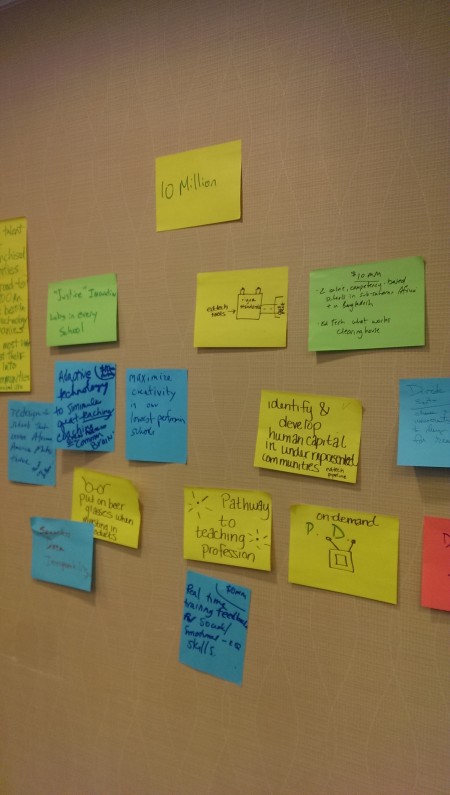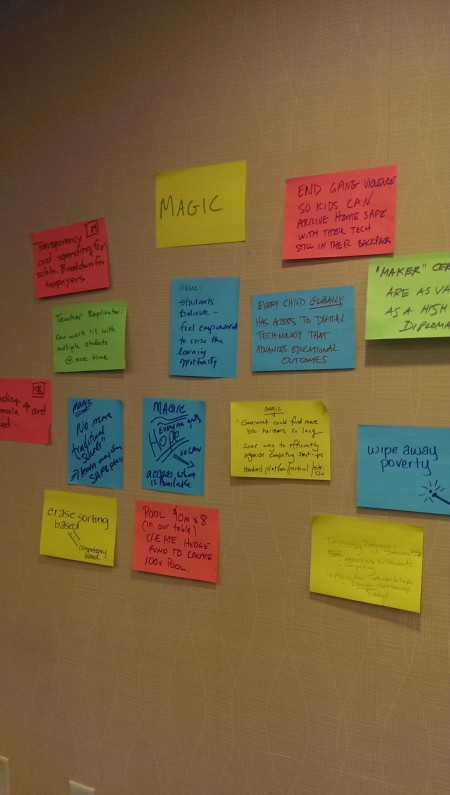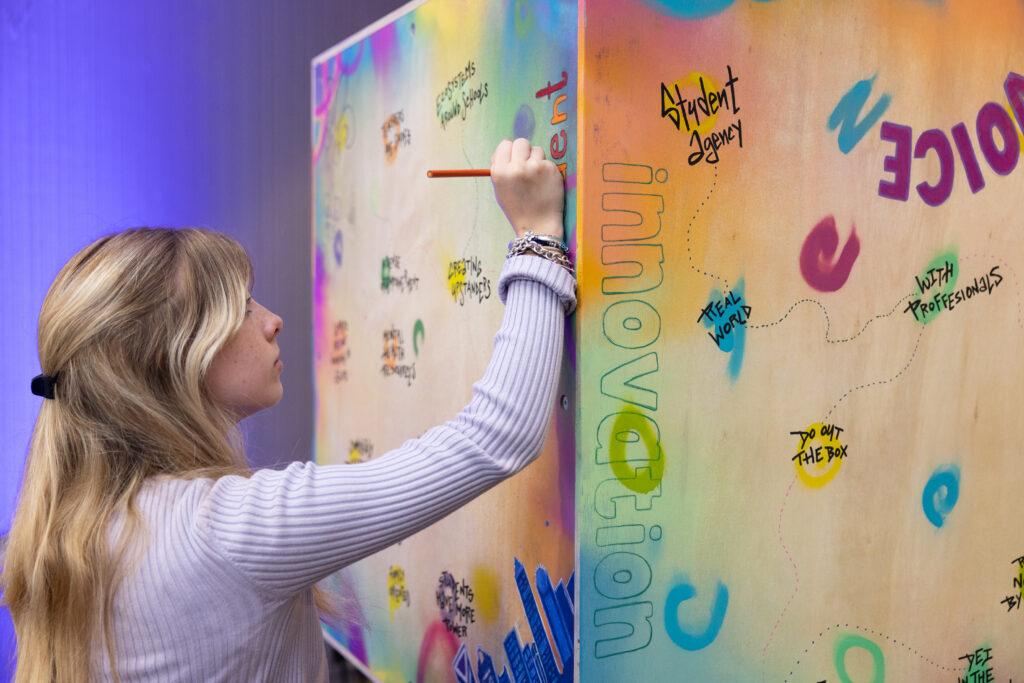In a series of discussions moderated by Betsy Corcoran of Edsurge, entrepreneurs and other education stakeholders tackled both the problems and opportunities in K12 learning. Their discussion centered around two central questions and were asked to share out initial answers, partially listed below.
- What excites you about the potential for learning technology? Differentiated learning, immediate feedback, less expensive education, increased access, greater scale, more productivity, learning outside of class
- What concerns or worries you about the growing role of edtech in learning? Real world soft skills get left behind, the achievement gap widening, education = IT, inadequate vetting of tools, parents don’t buy in, data ownership issues, professional development difficulties
After this initial discussion, guests Kalimah Priforce and Tom Vander Ark weighed in on the past and future of technology in education. In the context of history, Vander Ark points out humans have learned on types of paper for thousands of years and are just now starting to leverage new technologies. Priforce responded there’s another side to that history as well: for thousands of years it was illegal for many to pursue learning for political, economic, or racial reasons.
When asked what magical change they would like to see, Vander Ark focused on practical improvements, calling for better tools and technology for the classroom, specifically for improved learning platforms. Priforce chimed in asking for more thinking around inclusion, to change the language around concepts like “financial literacy” and rather encourage “financial inclusion” where all students are invited into the system.
At the end of the session, participants were invited to throw post-it solutions on the wall – both for how they would amplify the exciting aspects and create tools to alleviate the fears and concerns. They were prompted to come up with two types of solutions for each: one that has 10 million dollars, and one that can use magic.
Photos of the mindstorm are below. Solutions include skill based professional development, mastery based learning tools, justice innovation labs, and (on the fuzzier magic side) alleviating violence, pain, fear, and poverty.
Alleviating Concerns
With 10 million dollars
With Magic

Amplifying Excitement
With 10 million dollars

With Magic
In the words of Kalimah Priforce, “social entrepreneurs are really justice entrepreneurs working to change paradigms.” Innovation is alive and well in education – can’t wait to see what happens in the next year.




